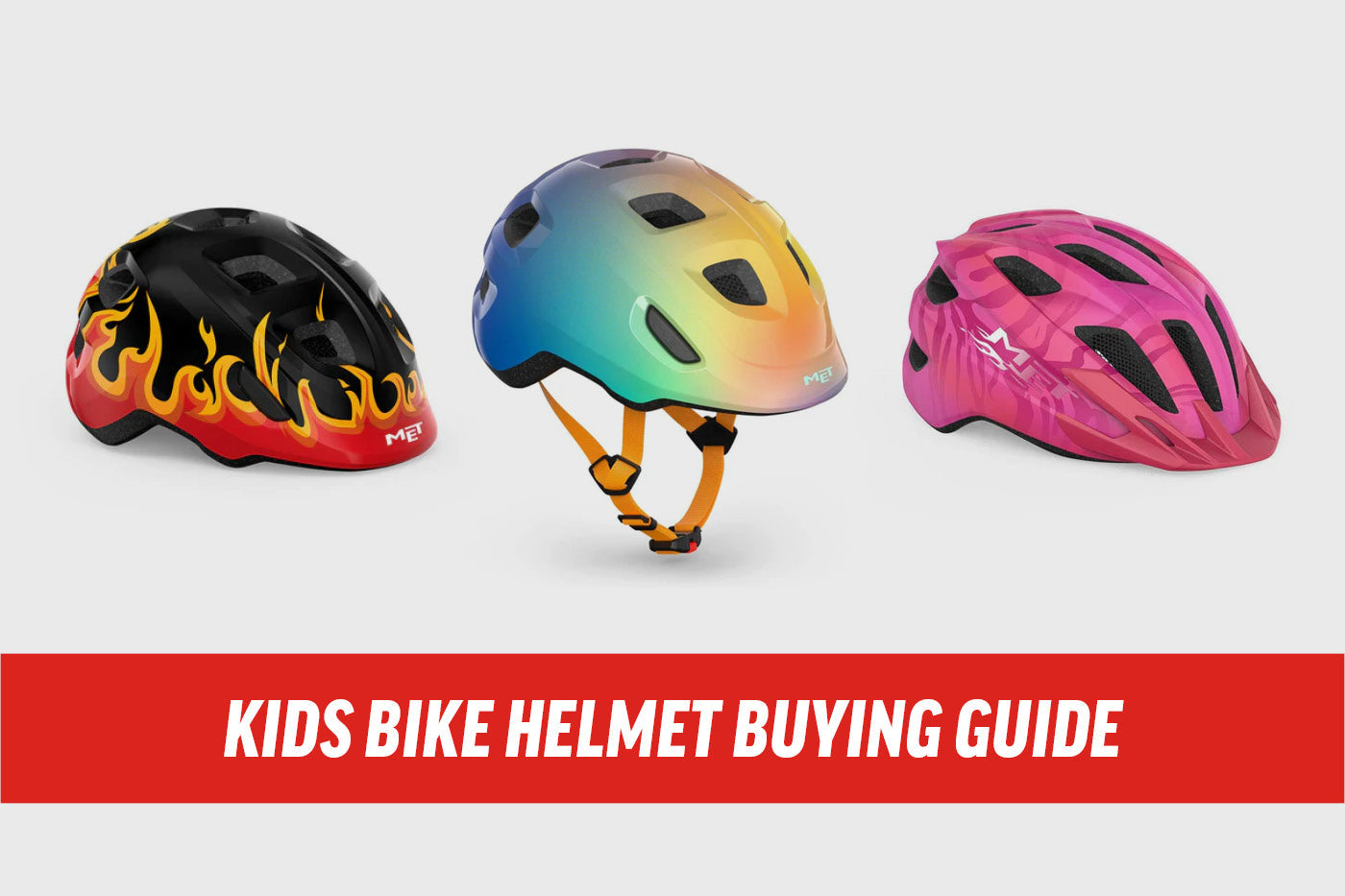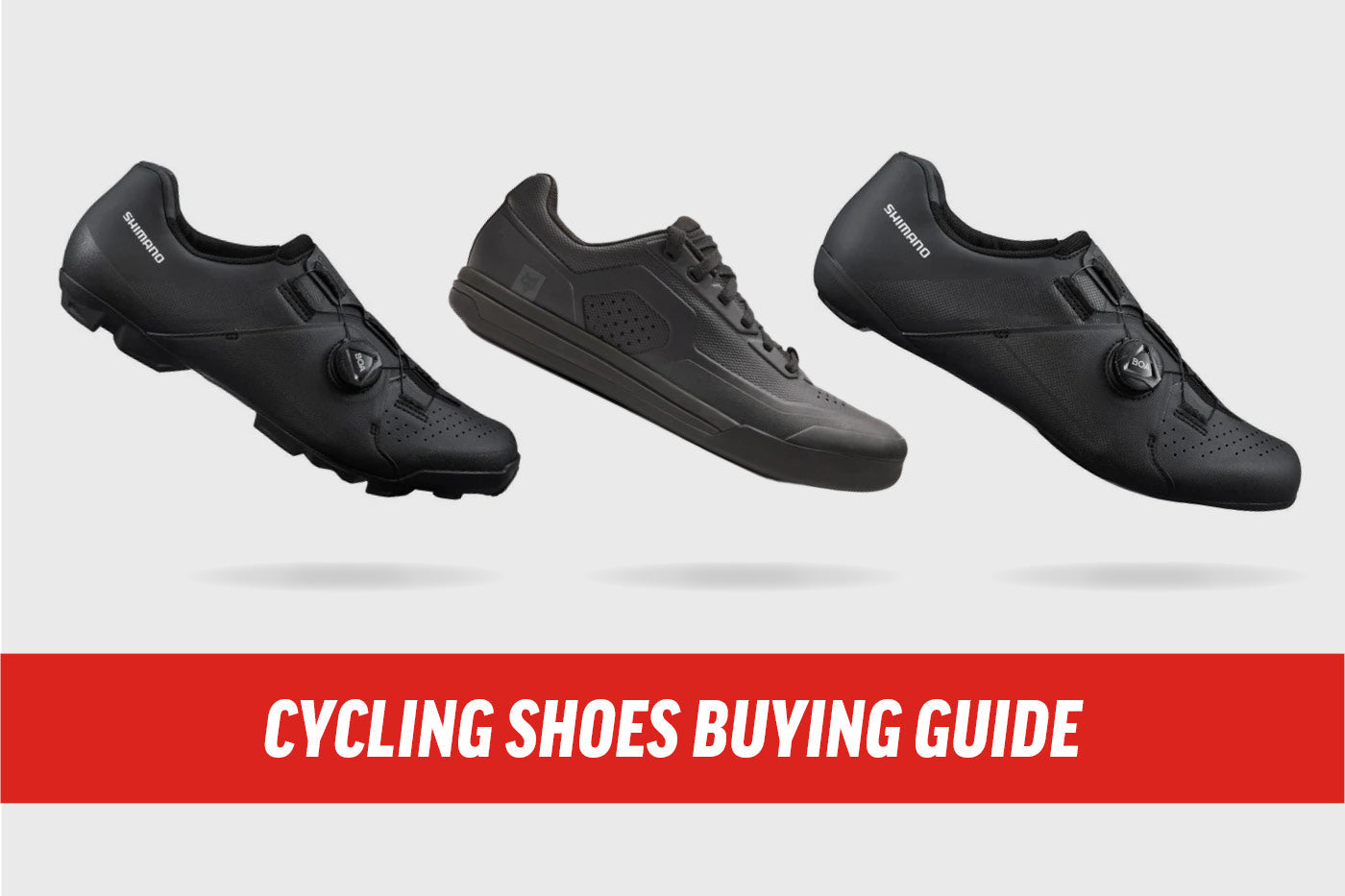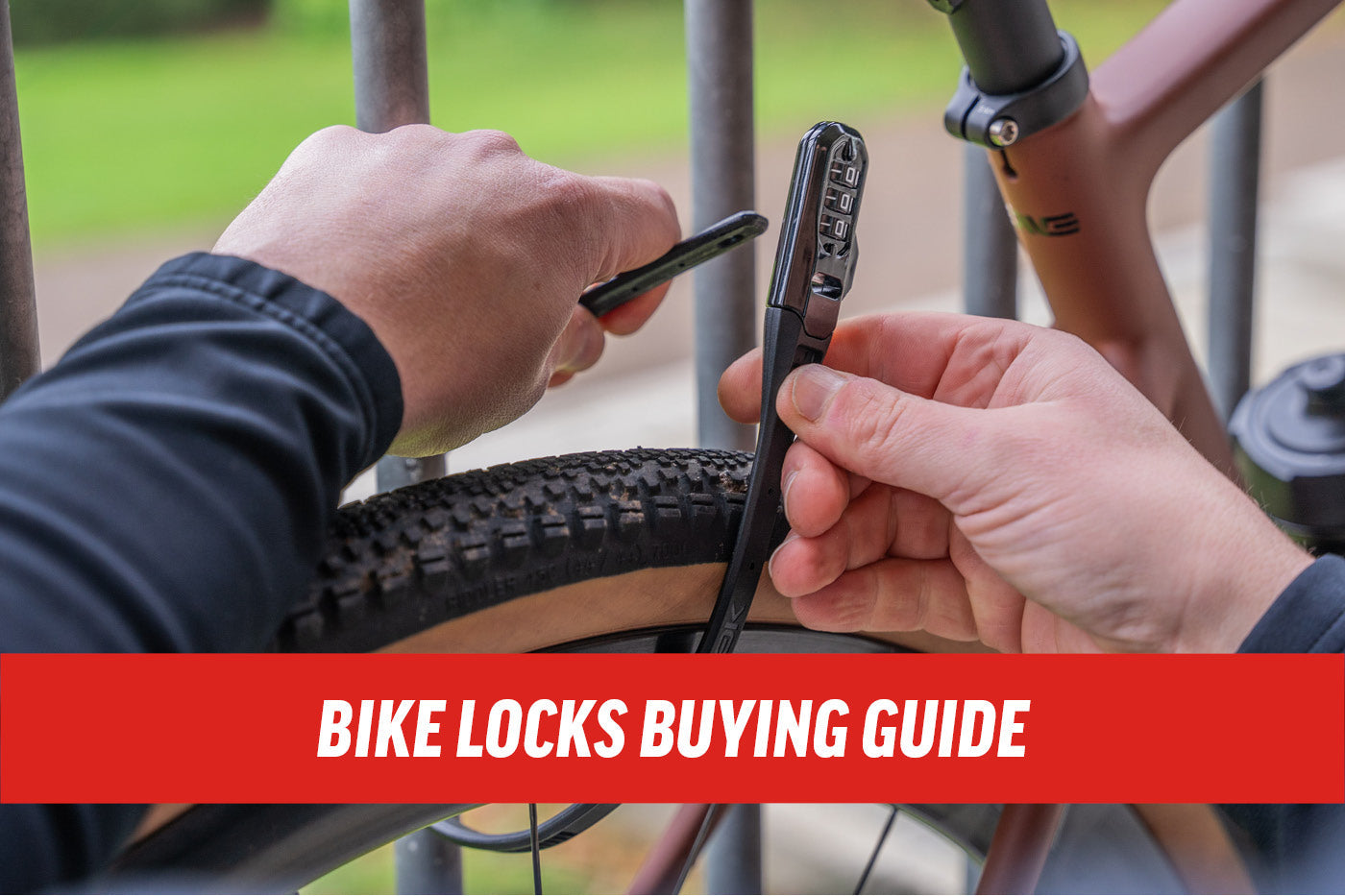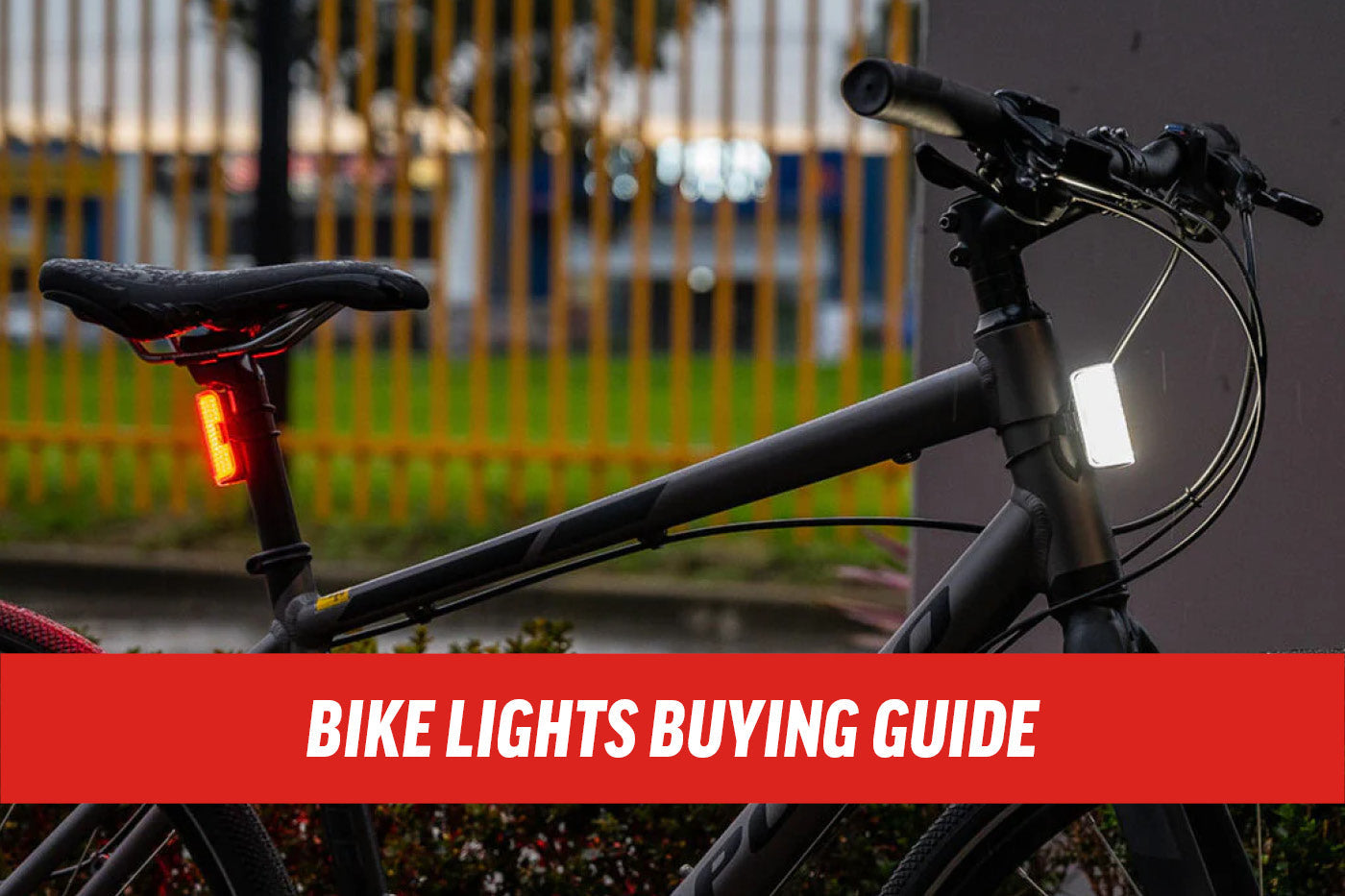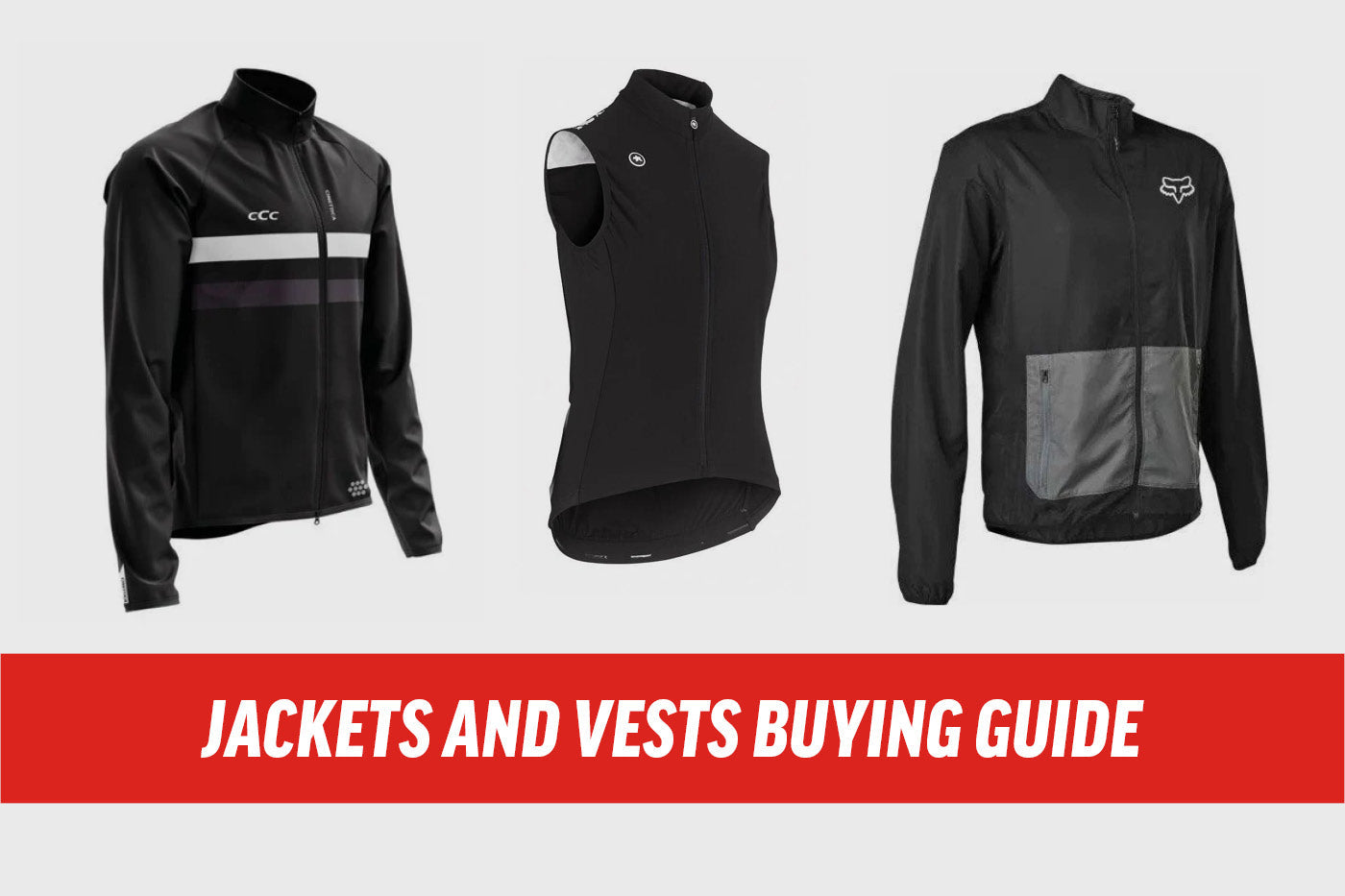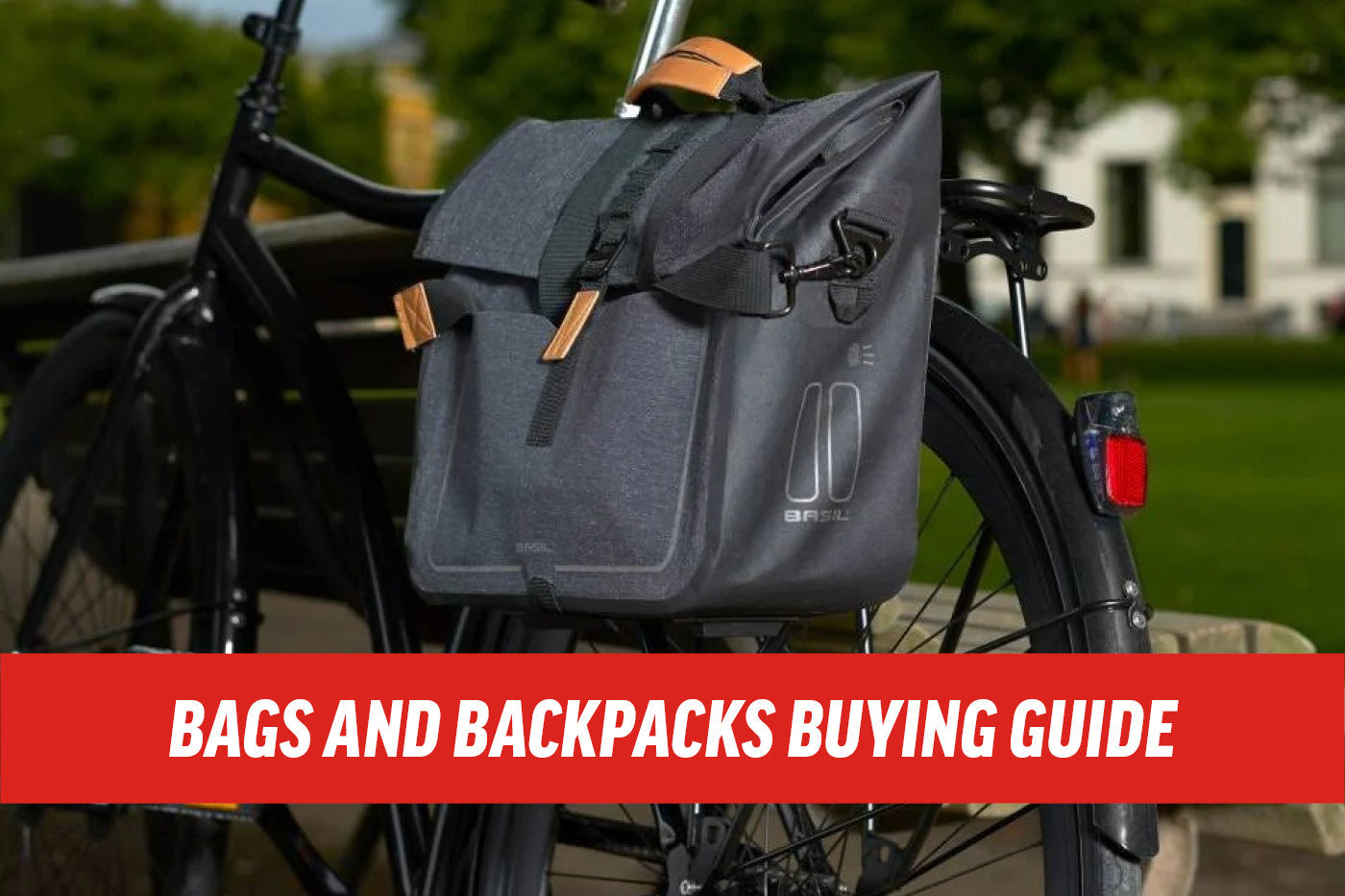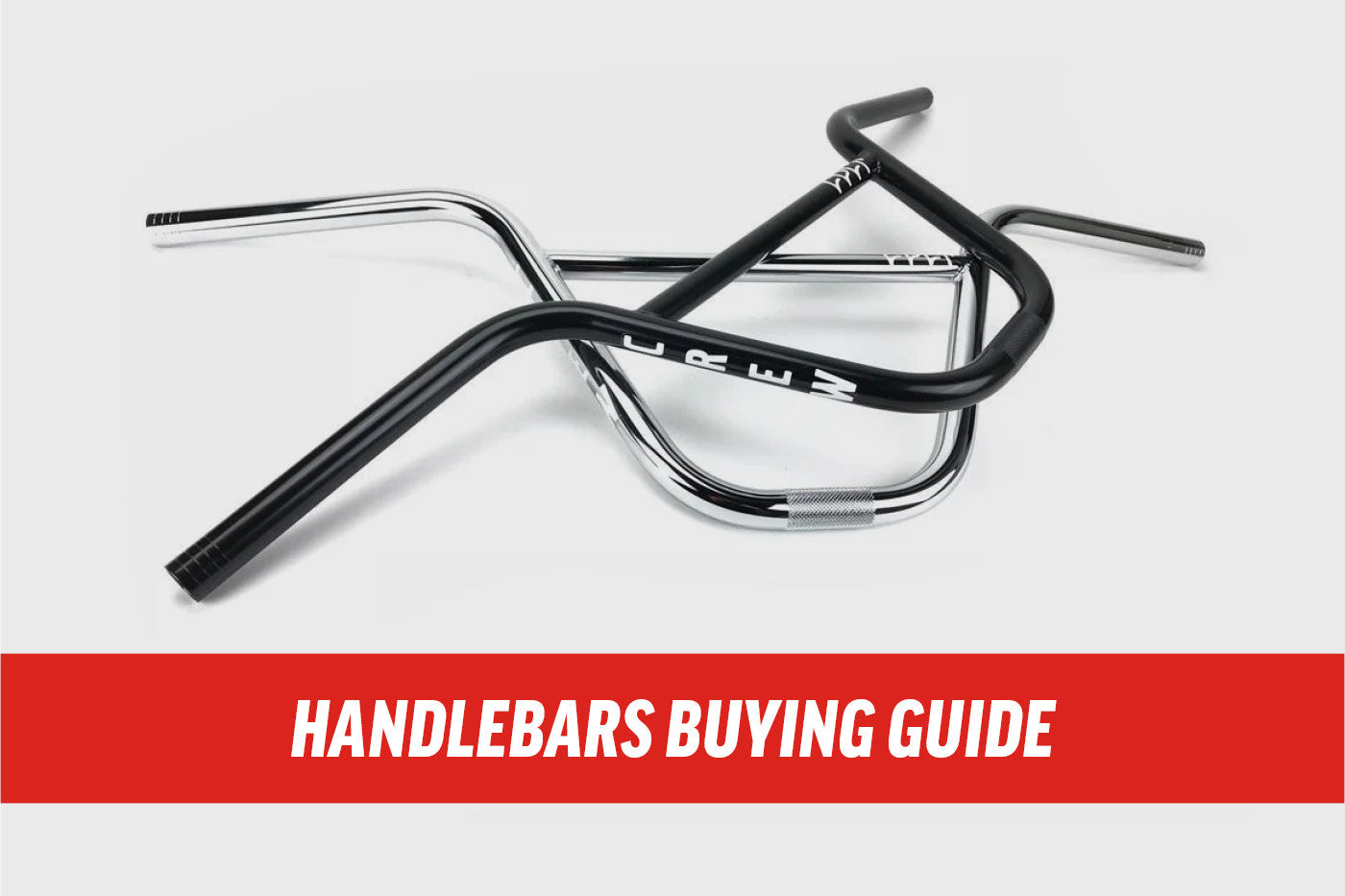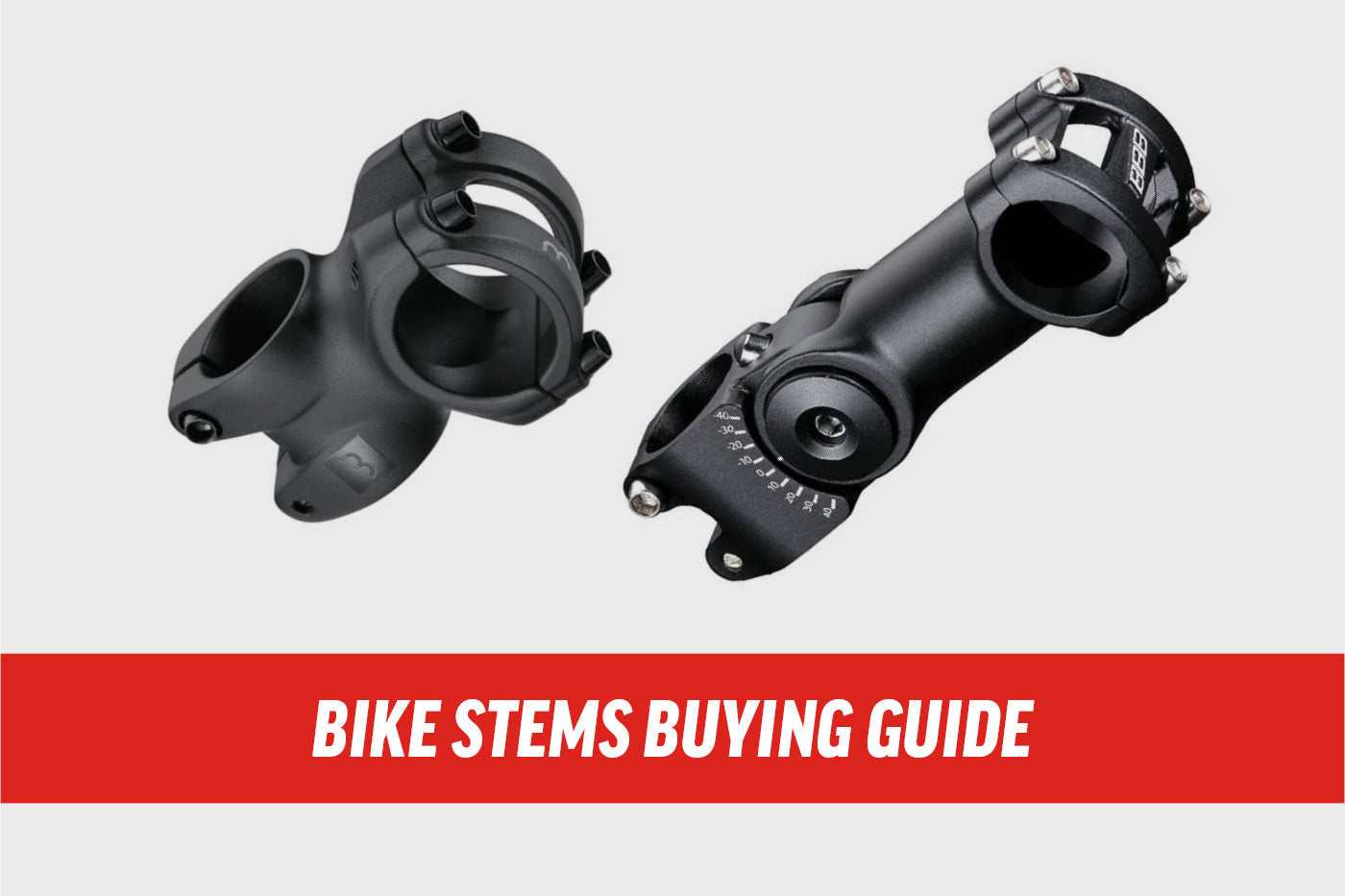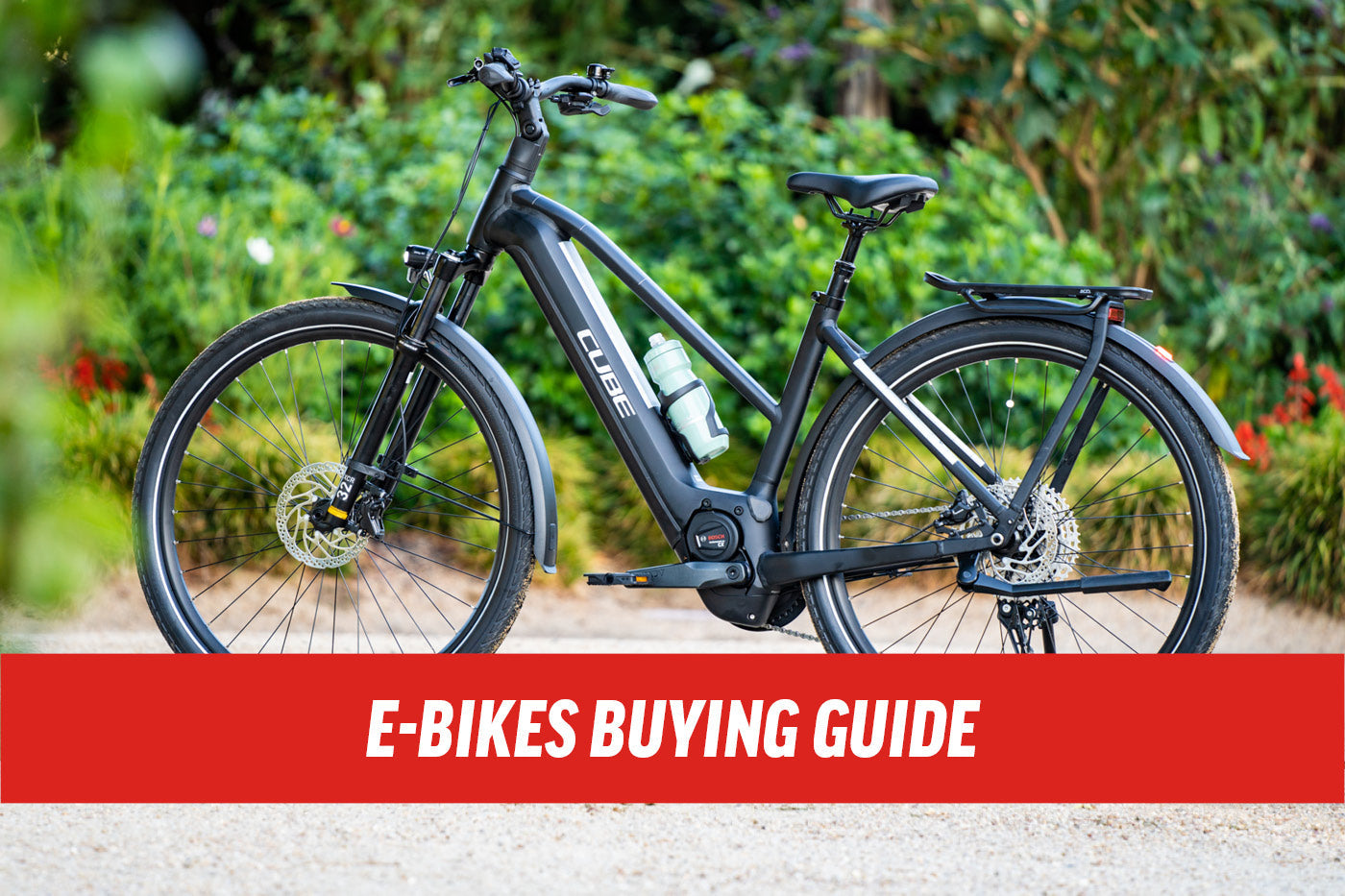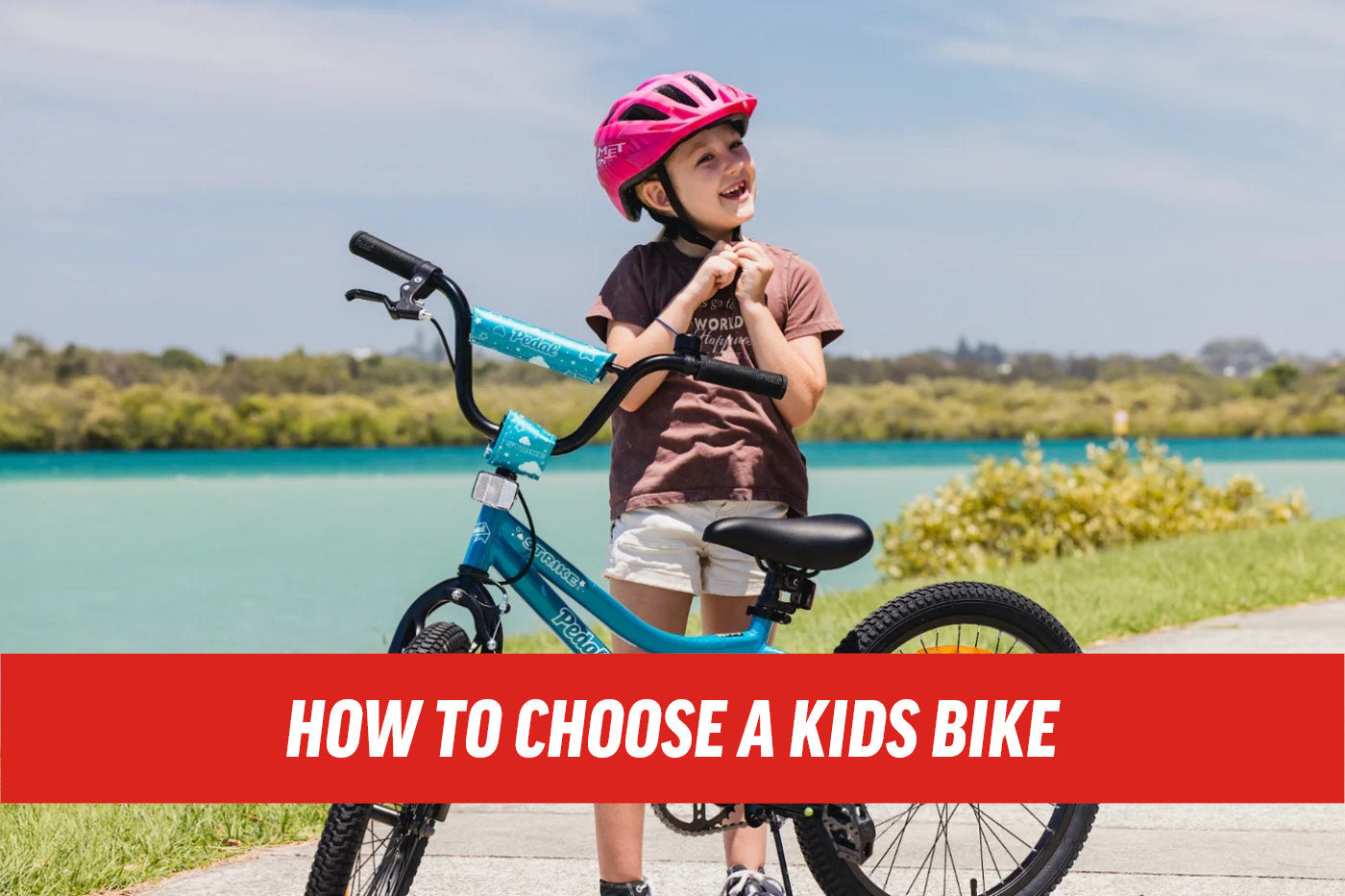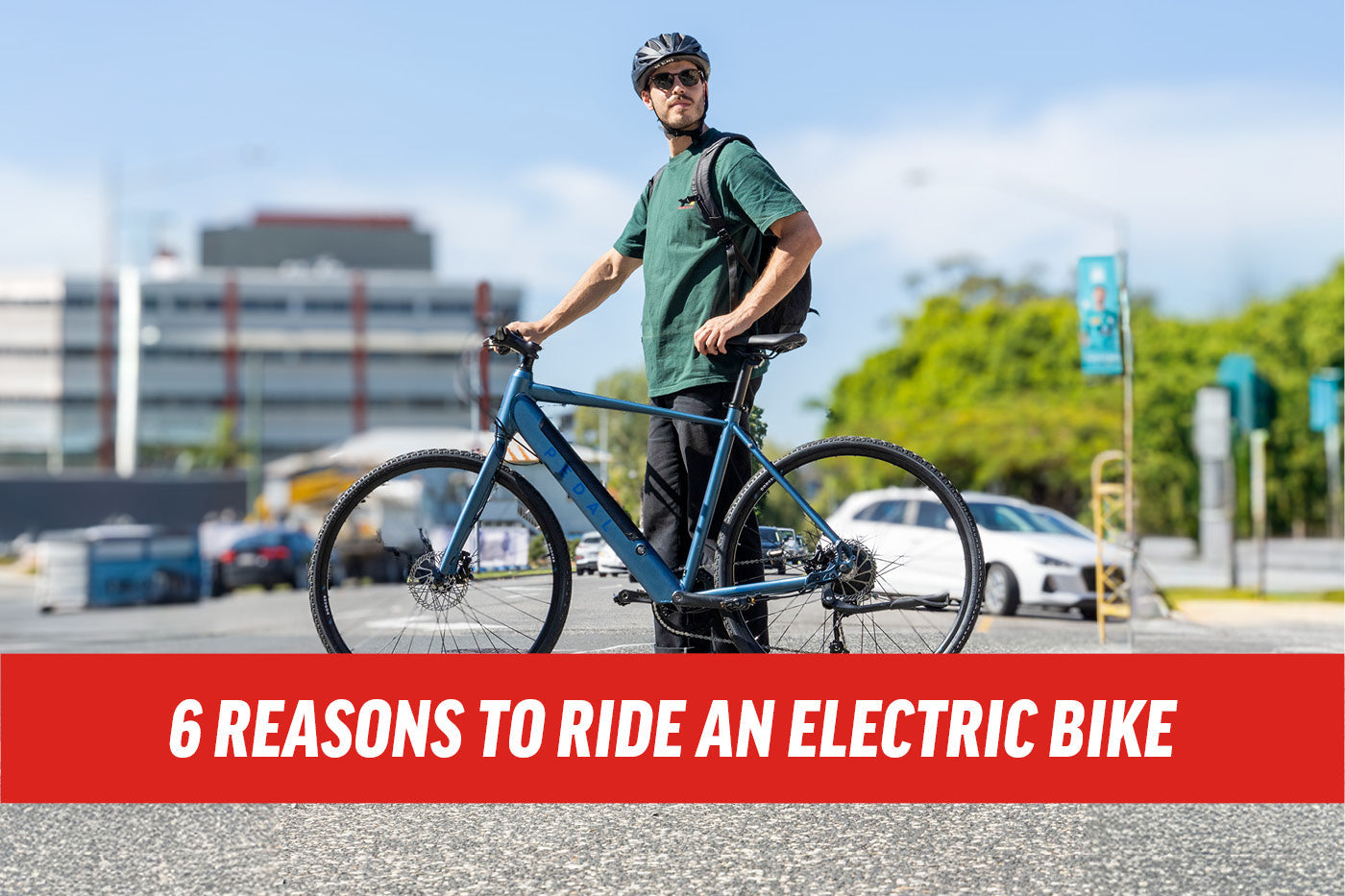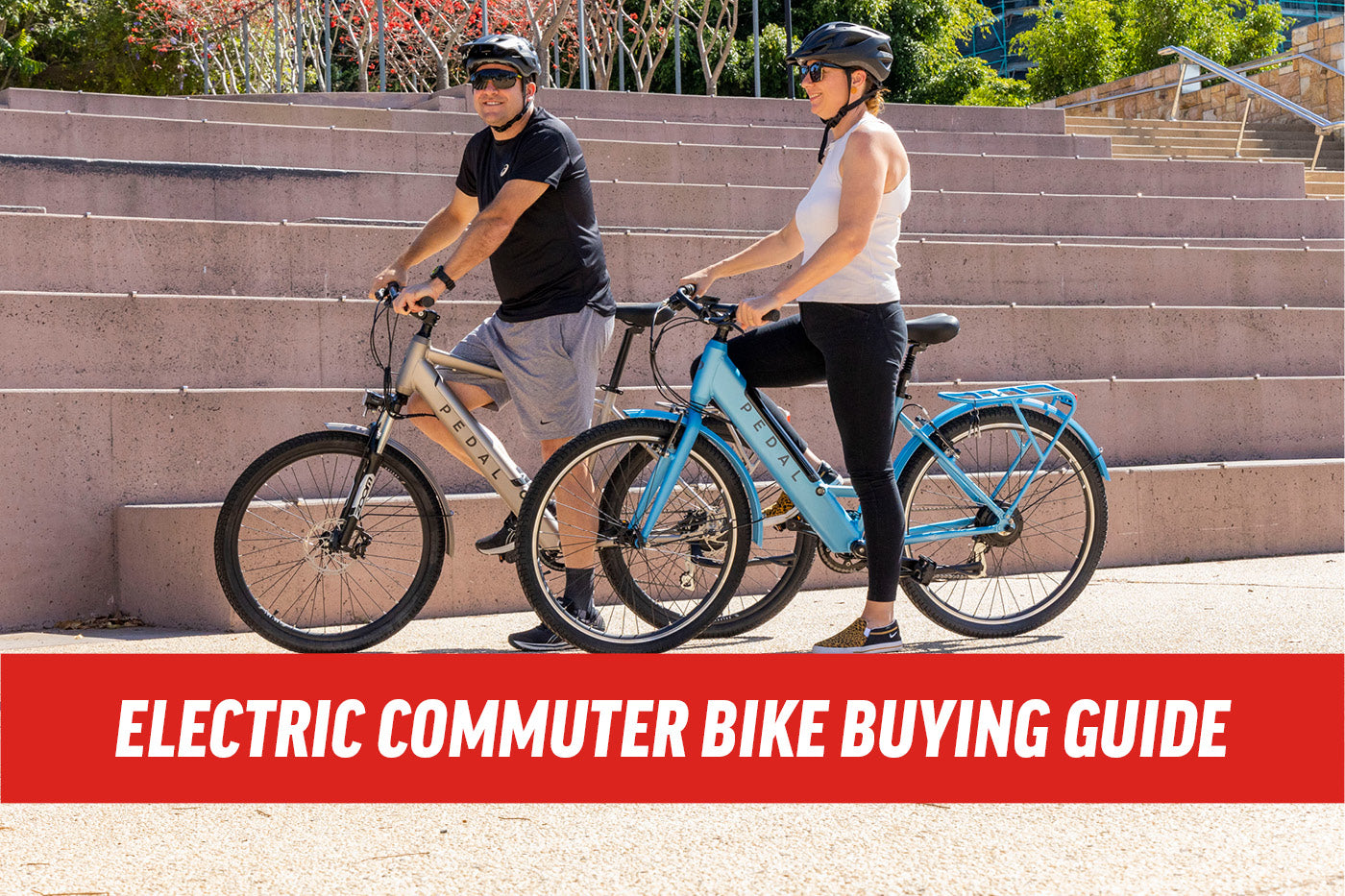Buying Guides and Advice
Buying Guides and Advice
Kids Bike Helmet Buying Guide
A child's laughter as they pedal their bike for the first time is a joyous sound. But with the fun and freedom of cycling comes the responsibility of safety. And when it comes to bike safety, there's one piece of equipment that's non-negotiable: a helmet. This guide will walk you through the importance of helmets for kids, how to pick one they'll love to wear, and how to ensure it fits perfectly for maximum protection. Why a Helmet is a Must-Have Riding a bike is a fantastic way for kids to stay active and explore their world. But falls and tumbles are an inevitable part of learning to ride. A properly fitted helmet is the single most effective way to prevent head injuries, reducing the risk of serious brain injury by up to 88%. It's not just for the road; a helmet should be worn every time your child rides, whether it's on the footpath, at the park, or in your own driveway. By starting the helmet habit early, you're instilling a lifelong safety practice. When kids see their parents and older siblings wearing helmets, it becomes a normal and expected part of getting on a bike. Finding a "Cool" Helmet They'll Want to Wear The safest helmet is the one your child will actually wear. If a helmet is uncomfortable or they don't like the design, it's more likely to be left behind. Here's how to find a helmet that's both safe and stylish: Let Them Choose: Get your child involved in the selection process. They're far more likely to be enthusiastic about wearing a helmet that they've picked out themselves. Whether it's their favourite colour, a cool pattern, or a design featuring their favourite character, a helmet that reflects their personality is a winner. Comfort is Key: Look for a lightweight helmet with good ventilation to keep them cool on hot days. Comfortable straps that don't chafe are also important. Some helmets even come with magnetic buckles that are easier for little hands to use and reduce the risk of pinching. Consider the Style: The type of riding your child does can also influence the style of helmet. A skate-style helmet might be more appealing for trips to the skate park, while a more traditional bike helmet is great for everyday riding. A kids mountain bike helmet can also be quite versatile. Ensuring the Perfect Fit for Maximum Protection An ill-fitting helmet won't provide the protection your child needs. A helmet should be snug, but not too tight. Here's how to get the perfect fit: Measure Their Head: Use a soft tape measure to find the circumference of your child's head. Measure about two finger-widths above their eyebrows, keeping the tape level all the way around. This measurement will help you when looking at helmet size charts. Position it Correctly: The helmet should sit low and level on their forehead, not tilted back. You should be able to fit one or two fingers between their eyebrows and the bottom of the helmet. Check the Side Straps: The side straps should form a "Y" shape just below their earlobes. Adjust the Chin Strap: The chin strap should be snug enough that you can only fit one or two fingers between the strap and their chin. When they open their mouth wide, they should feel the helmet pull down slightly. The "Shake" Test: Ask your child to shake their head from side to side and nod up and down. The helmet should not move or wobble. By following these simple steps, you can ensure that your child's helmet is providing the best possible protection. A well-fitting, "cool" helmet will give you peace of mind and allow your child to enjoy the freedom and fun of cycling safely.
Read moreCycling Shoes Buying Guide
Step Up Your Ride: The Ultimate Cycling Shoes Buying Guide If you're looking to get more out of your bike rides, one of the biggest upgrades you can make is what you put on your feet. Ditching your regular trainers for a pair of dedicated cycling shoes is a total game-changer. Why? This improvement comes from shoes designed specifically for cycling, whether they connect to "clipless" pedals for maximum efficiency or grip tenaciously onto flat pedals for confidence and control. This guide will break down everything you need to know to find the perfect pair for your ride. Types of Cycling Shoes The first step is to match your shoe to your primary style of riding. Each type is specifically designed for a different environment. Road Cycling Shoes: Built for speed and efficiency on pavement, these are the lightweights of the cycling world. They feature extremely stiff soles to maximize power transfer and a sleek profile for aerodynamics. They are designed to be used with clipless pedals and are very awkward to walk in due to the large, external cleat. Mountain Bike (MTB) Clipless Shoes: Designed for off-road riders who want to be locked in. These shoes have a rugged construction and a stiff sole, but with enough flexibility for short hikes. The small metal cleat is recessed into the sole and surrounded by rubber tread, making it much easier to walk in than a road shoe. Flat Pedal Shoes: A popular choice for mountain bikers (especially for trail, enduro, and downhill), commuters, and BMX riders. These look similar to skate shoes but are packed with cycling-specific technology. They feature an ultra-sticky rubber outsole with a special tread pattern designed to interlock with the pins on a flat pedal, providing incredible grip. The sole is also much stiffer than a regular trainer, reducing foot fatigue and improving pedalling efficiency. They offer the freedom to quickly take a foot off the pedal, which is great for building confidence on technical trails. Indoor/Spin Shoes: Made for spin classes or your indoor trainer. These are often a hybrid, designed with comfort and breathability as top priorities. Many have soles compatible with both 2-bolt and 3-bolt clipless systems, giving you flexibility depending on the bike you're using. Understanding Cleats For riders choosing a "clipless" system, understanding cleats is essential. (If you've gone for flat pedal shoes, feel free to jump to the next section!) The cleat is the crucial link that bolts to the bottom of your shoe and clips into the pedal. The two main systems are not interchangeable. 3-Bolt System (Look KÉO / Shimano SPD-SL style): This is the standard for road cycling. The large, plastic cleat creates a wide, stable platform against the pedal, which is perfect for efficient power transfer over long distances. Different coloured cleats often indicate the amount of "float" (the degree your foot can rotate), allowing you to find a comfortable position. 2-Bolt System (Shimano SPD style): This is the go-to for mountain biking, gravel riding, and indoor cycling. The smaller metal cleat is recessed into the shoe's sole, which allows for easy walking and quick clipping in and out. This system is also better at shedding mud and debris. Fastening Systems How a shoe closes affects its fit, weight, and ease of adjustment. BOA Dials: A ratcheting dial tightens a steel wire, providing incredibly precise, on-the-fly adjustments and distributing pressure evenly across your foot. This is a top choice for performance and convenience on clipless shoes. Laces: The classic choice for flat pedal shoes and some clipless models. Laces offer the most customisable fit, allowing you to perfectly tailor the tension across your entire foot. Just be sure to securely tuck them away from your chain. Velcro Straps: Simple, lightweight, and reliable. Velcro is common on entry-level to mid-range shoes and is very easy to use, though it offers less fine-tuning than a dial system. Sole Materials A shoe's sole dictates its stiffness—the key to efficient pedalling. Carbon Fibre: The gold standard for clipless road shoes. Carbon soles are the lightest, stiffest, and most efficient option available, ensuring maximum power transfer. Nylon / Composite: The most common material in mid-range clipless shoes. It offers an excellent balance of stiffness, comfort, and affordability. Rubber Composite: The heart of a flat pedal shoe. The stiffness comes from an internal shank (a reinforced plate), while the outsole is made of a carefully formulated sticky rubber compound for maximum grip on the pedal pins. Final Thoughts: Fit is King While it's easy to get caught up in sole materials and fastening systems, the most important factor of all is fit. A shoe that doesn't fit correctly will be uncomfortable and inefficient, regardless of how expensive it is. Sizing varies between brands, so it's always best to try shoes on before you buy. A well-fitting shoe should be snug in the heel with a little bit of wiggle room for your toes. Once you find that perfect pair, you'll wonder how you ever rode without them.
Bike Locks Buying Guide
A cyclist's best friend is a trusty bike lock. With so many options on the market, choosing the right one can feel overwhelming. This guide will break down the different types of bike locks, their features, and help you make an informed decision to keep your beloved bike safe and sound. Why You Need a Bike Lock The primary purpose of a bike lock is to deter theft. A good lock makes your bike a less attractive target, forcing thieves to either give up or spend more time and effort trying to steal it, which increases their risk of being caught. Investing in a quality lock provides peace of mind, allowing you to leave your bike unattended without constant worry. Types of Bike Locks U-Lock / D-Lock U-locks, also known as D-locks, are a popular choice for their high level of security. They consist of a rigid U-shaped shackle that locks into a crossbar. Their hardened steel construction makes them resistant to cutting and leverage attacks. U-locks are ideal for securing your bike frame to a fixed object like a bike rack or pole. Folding Lock Folding locks offer a great balance of security and portability. They are made of a series of steel plates connected by rivets, allowing them to be folded into a compact size for easy transport. While generally not as secure as a high-quality U-lock, they provide more flexibility for locking your bike to various objects. Chain Lock A chain lock consists of a heavy-duty chain and a separate padlock. Their flexibility allows you to secure your bike to a wide range of objects, and they are a formidable deterrent against cutting attacks. However, their weight can make them less convenient to carry around. Look for chains with hexagonal or trapezoidal links for added security. Cable Lock Cable locks are the lightest and most portable option, but they offer the least amount of security. They are best used as a secondary lock to secure your wheels or accessories, or for very short stops in low-risk areas. Even thick cable locks can be easily cut with bolt cutters. Additional Security Features Smart Trackers In the unfortunate event your bike is stolen, a smart tracker can be a lifesaver. These small devices can be hidden on your bike and use in-built GPS or other technologies like an Apple AirTag (sold separatey) to track its location, significantly increasing the chances of recovery. Alarms Some bike locks now come with built-in alarms. These motion-sensitive devices will emit a loud siren if your bike is tampered with, drawing attention to the thief and scaring them off. Locking Mechanism - Combo vs. Key Locks Combination Locks Combination locks offer the convenience of not having to carry a key. You can set your own personal code, making them easy to use and share. However, they are generally considered less secure than key locks and can be more susceptible to being decoded by a skilled thief. Key Locks Key locks provide a higher level of security, with complex key designs that are difficult to pick. They are the preferred choice for high-risk areas or for securing expensive bikes. The only downside is the need to carry a key, which can be lost or forgotten. Conclusion Choosing the right bike lock depends on your individual needs and risk factors. For the highest level of security, a U-lock or a heavy-duty chain lock is your best bet. A folding lock is a great option for those who prioritize portability. Cable locks should only be used as a secondary deterrent. Consider adding a smart tracker or an alarm for an extra layer of protection. And when it comes to locking mechanisms, a key lock will almost always be more secure than a combination lock. By understanding the different types of locks and their features, you can select the perfect one to keep your bike safe and give you the freedom to ride without worry.
Bike Lights Buying Guide
Your Ultimate Guide to Choosing the Perfect Bike Lights Whether you're a daily commuter, a weekend road warrior, or a trail-shredding mountain biker, having the right set of bike lights is crucial for your safety. Not only do they illuminate your path in low-light conditions, but they also make you visible to other road users. With a bewildering array of options on the market, choosing the right lights can be a daunting task. This guide will shine a light on the key features to consider and help you find the perfect set for your needs. "To See" vs. "To Be Seen": Understanding the Basics Bike lights generally fall into two categories: "To See" Lights: These are powerful front lights designed to illuminate the path ahead of you, allowing you to see potholes, debris, and other obstacles on dark roads or trails. "To Be Seen" Lights: These lights are designed to make you visible to other road users. They include both front and rear lights and are essential for riding in any light conditions, including during the day. Key Features to Consider When shopping for bike lights, keep these key features in mind: Brightness (Lumens): The brightness of a bike light is measured in lumens. The higher the lumen count, the brighter the light. The number of lumens you need depends on your riding environment: Well-lit urban areas (being seen): 100-500 lumens for a front light is sufficient. Dark suburban roads or unlit bike paths (seeing): 500-1200 lumens for a front light is recommended. Off-road or trail riding (seeing in complete darkness): 1200+ lumens is ideal. Rear lights typically have a lower lumen output, with anything from 20 to 300 lumens being effective for visibility. Beam Pattern: The beam pattern affects how the light is distributed. Narrow/Spot Beam: Concentrates the light in a small area, which is great for seeing far down the road at high speeds. Wide/Flood Beam: Spreads the light over a larger area, improving peripheral vision, which is useful for navigating technical trails. Combination Beam: Many lights offer a combination of spot and flood beams, providing a versatile option for various riding conditions. Battery Life and Charging: USB Rechargeable: Most modern bike lights are USB rechargeable, which is convenient and cost-effective. Check the charging time and make sure it fits your lifestyle. Disposable Batteries: Some cheaper lights still use disposable batteries. These can be a good backup option, but they are less environmentally friendly and can be costly in the long run. Run Time: Pay close attention to the claimed run time for different light modes. A light's run time on its brightest setting will be significantly shorter than on a flashing or lower-power mode. Mounting Options: Your lights should be easy to mount and secure on your bike. Handlebar and Seatpost Mounts: These are the most common mounting locations. Look for sturdy, tool-free mounts that are easy to use. Helmet Mounts: A helmet-mounted light is a great addition for mountain bikers as it allows you to direct the light where you are looking, especially around corners. Other Mounts: Some lights can be mounted on racks, bags, or clothing for added visibility. Durability and Weather Resistance: If you ride in all weather conditions, look for lights with a good level of water resistance. The IP rating (Ingress Protection) indicates how well a light is protected against dust and water. An IPX4 rating is sufficient for rain, while an IPX7 rating means the light can be submerged in water. Matching Lights to Your Riding Style Urban Commuting: For city riding, the priority is being seen by motorists, pedestrians, and other cyclists. A front light of 100-500 lumens with a flashing mode and a bright rear flasher (20-100 lumens) is a good setup. Road Cycling: If you're riding on unlit roads, you'll need a more powerful front light to see the road ahead. A front light of 500-1200 lumens or more, paired with a bright rear light, will keep you safe. Mountain Biking: For trail riding at night, you'll need a powerful lighting system to navigate technical terrain. A combination of a bright handlebar-mounted light (1200+ lumens) and a helmet-mounted light for looking through turns is the ideal setup. Conclusion Investing in a good set of bike lights is one of the most important things you can do to improve your safety on the road or trail. By considering your riding style and the key features outlined in this guide, you can choose a lighting system that will keep you visible and illuminate your way, no matter where or when you ride. Ride safe!
Jackets And Vests Buying Guide
A good cycling-specific jacket can last you years and be useful in a variety of ways. Many cycling jackets can be layered over a jersey for warmth, and often have reflective features for visibility in traffic. A thin jacket can be stuffed into a jersey pocket to prevent overheating. Jackets & Vests When buying a mountain biking jacket ensure that you get a close fit to avoid catching branches. If you are looking at road jerseys it is a good idea to look at reflective features if riding in traffic. See All Jackets and Vests Cycling Jackets Cycling jackets often have a special cut that makes them specific to riding a bike: the back of the jacket will be longer than the front and the sleeves will also be cut at an angle so that while in riding position the arms won't shrink up and your back will stay comfortably covered. See All Jackets and Vests Vests Vests are also great because they keep your core warm and can be used with arm warmers for quick removal during a ride. Cycling jackets and vests often come in bright colours to keep you visible on the road. A nice thin jacket can also be handy as sun protection as well. See All Jackets and Vests When you need a bit more warmth, cycling specific jackets and vests offer the optimal level of warmth, ventilation and protection for active riders. Particularly if you're setting off for a wet ride, a jacket will protect your arms and torso from the rain, while still being lightweight and non-restrictive. A vest is perfect for cooler rides where you just want to block some of the wind chill around your chest. Vests are generally wind proof at the front, and well ventilated at the back to prevent over heating. They're also lightweight and compact enough to take off and tuck into your jersey pockets if you do get too hot.
Bags And Backpacks Buying Guide
When choosing a cycling backpack, there are a couple of important considerations to make in order to get the right product for you. First, you'll want to ensure that your backpack has an adjustable chest strap to stop it from moving around too much when you're on the move. Second, consider which size backpack you'll need. Ideally you'll want just enough room to carry your essentials - if you get a backpack that is too large you'll be carrying unnecessary weight which of course will slow you down over longer rides. Backpacks with a capacity of around 15-30L are a safe bet for most riding scenarios. Finally, if you're going to be commuting to work, some cycling specific backpacks include a separate wet laundry compartment which is great for keeping your sweaty riding gear away from your other belongings. Hydration Backpacks If you're covering serious distances, a hydration pack is worthy investment as it will allow you to comfortably carry around 2-3L of water which is much more than you can fit in frame mounted water bottles. Most hydration packs will also be designed to carry the basics like weather protection, maps and energy bars which means you'll be able to stay out on the trails longer! It is important to pick the right size hydration pack for the type of riding you'll be doing as whilst larger capacity models will allow you to carry more H2O, you'll also be carrying more weight which isn't fun when you're only out for a quick blast along the trails. See All Hydration Backpacks Saddle Bags As the name suggests, Saddle Bags sit neatly under the saddle of your bike and are easily attached using either velcro or clip in fasteners. A saddle bag is a valuable inclusion in any cyclists kit as these little gems are the perfect place to store your wallet, keys, spare tubes and small tools. Saddle bags come in a range of sizes to suit different riders needs and are one of the most common accessories you'll see out on the road. See All Saddle Bags Pannier Bags Pannier bags are a popular way for commuters and travellers to carry their gear thanks to their large storage capacity and convenient mounting position which allows weight to be distributed evenly across your bike. Most riders fit their Pannier bags over the rear tyre however it is possible to use them over both the front and rear wheels for maximum storage space on longer rides. The majority of Pannier bags feature quick release mounts meaning you can easily remove them once you arrive at your destination and begin exploring without needing to worry about leaving all of your belongings with your bike. See All Pannier Bags A cycling bag is an essential piece of equipment for any rider both professional and leisure. When you're planning an extended journey or one that sees you venturing away from home, it is important to have the right equipment on hand, should an unfavourable situation arise. Our wide range of bags & backpacks will allow you to find a bike bag that is perfectly suited to your needs. Choose from a wide range of reputable brands including Camelbak, Deuter and Tioga. Pannier bags are the perfect solution to carrying all your extra bike spares and safety equipment, while backpacks are great for adventurous mountain bike rides or cyclists on the go.
Handlebars Buying Guide
Handlebar design and dimensions are integral to how your bike handles and ultimately, how well it fits you. Bikes will generally come with handlebars of the appropriate size and shape, however, an upgrade can give you that extra performance edge. Road Bike Handlebars The most important consideration when buying road bike handlebars is width with the goal being to try and match the width of the bars to your shoulders to ensure a comfortable riding position. Secondly, you'll need to decide on what shape you require. The curve in road bike handlebars is referred to as 'drop' with a larger drop allowing for a more aggressive and aerodynamic riding position, however if you're not confident you'll be able to stay down in your drops for long periods of time then a more compact design might be the best for you. Finally, you should consider what material you'll require. Road bike bars are available in both carbon and aluminium and the choice largely depends on how much weight you want to save vs. how deep your pockets are. See All Handlebars Mountain Bike Handlebars As is the case with road bikes, mountain bike handlebars come in a variety of widths to suit different rider sizes and styles. Wider bars provide greater control in corners, but can be a handful around obstacles in a tight and twisty trail. If you're into downhill riding then you'll want extra strong bars to put up with the rough ground and heavily landings you'll be encountering on the trails, whereas if cross-country riding is more your style then you will be more concerned with weight rather than strength. It is also important to ensure that you get the correct diameter bar to fit your stem with the most common size being 31.8mm. The final consideration to make is rise, which refers to how much higher the ends of the bars sit in relation to the centre clamp. A lower rise gives a more aggressive riding position however won't be as comfortable over longer rides as bars with a larger rise. See All Handlebars
Bike Stems Buying Guide
The right size bike stem will greatly improve your riding efficiency and comfort. They are available in varying lengths to accommodate riders of different heights. Short stems provide a more upright riding position. While a longer stem will produce a more 'stretched out' position. Stems are also available in a variety of angles which allows you to effectively raise or lower your handlebars to achieve the optimal riding position. See All Bike Stems
E Bikes Buying Guide
Electric bikes or e-bikes are bicycles powered by a long life battery that runs an electric motor. The motor acts to assist pedalling, making the act of riding simpler, easy and faster. You can control the amount of assistance the motor provides, which either increase or decrease the energy required by the battery or the rider. E-bikes E-bike technology can be found across many different styles of bikes, but generally the use cases can be separated in commuting and mountain biking. In either setting the general benefit is the same - use the electric motor to help you get further on your bike. For commuters this means longer distances that may have previously been unattainable can be achieved with no sweat (literally). See All E-bikes Some riders will even progressively reduce the amount of assistance they require as they become fitter over time, a great way to build up your fitness level. For mountain bikers, it means access to more of the fun downhill sections they you may not be able to access on your own. Faster, further, steeper terrain becomes accessible to riders of any fitness level. Imagine getting twice as many runs out of morning on the trails. See All E-bikes VelectriX mountain E-bikes are a revolution for the bike industry with their sleek aluminium frame, chargeable long-life lithium battery and easy-to-read LCD screen, with helpful support including current battery life display and customisable speed and assistance. With a VelectriX bike, you'll be able to ride anywhere on and off road created with Aussie conditions in mind, they ensure a safe ride reducing the force of impact when encountering tricky terrain. See All e-Bikes Commute to Work With an e-bike, you get 36v of Lithium-Ion power that assists with your peddling. It's not like a motor bike or scooter that does the work for you, it simply gives you that extra push so you can arrive at work fresh and fast. Foldable Design With a comfortable range of up to 40kms, a quick charge time and easy "2 fold" mechanism, this folding e-bike is great for the weekend traveler, camper-van/caravan owner, uni student, city commuter, or for someone that is short of storage space. Hardtail Mountain Bike VelectriX Ascent 27.5E has 650b specific componentry and geometry and then pushes the boundaries by adding a powerful Bafang 250watt rear hub motor together with a 11.5ah Panasonic battery. Now pedaling uphill is half the fun. Ask anyone what they think of an E-bike and you'd probably get a dirty look from road bike riders and laughter from mountain bike riders. The newest generation of e-bikes coming to market do away with the stigma of previous generations, the frames are more streamlined and lighter, battery packs last longer and provide more convenience. E-bikes are designed to assist your peddling, not replace you so you can get going quicker and arrive less sweaty and tired
How To Choose Bikes For Kids
Bikes make for a fantastic gift for children. They're fun, safe, and encourage the child to be active and enjoy the outdoors. The most important thing to consider when buying a bike for a child is the wheel size. This relates to the height of the child more than the child's age, however, for simplicity this guide will refer to the suitability of the bike relative to approximate age groups. Given how quickly young children grow, it is important to speak to an experienced consultant in order to get the longest useful life out of the bike. Additionally, for safety reasons it is important that your child is riding the correct sized bike that they can safely and easily steer, brake and dismount from. Apart from size, the other important consideration is the frame. Steel frames will be heavier and more difficult to ride for beginners; and also prone to rust. Alloy frames, while more expensive, will be lighter and resistant to rust. Kids Bikes - 12" Suitable for kids 2 - 4 years old. These bikes come with training wheels, and may feature a push steerer so the child can be directed when required. See 12" Kids Bikes Kids Bikes - 16" Suitable for kids aged 3 - 6. Generally come with training wheels and no gears. Some children may not have developed a lot of the strength required for riding, so the bike's weight will be an important consideration. For older children you may want to consider a 16" BMX for a stronger, heavier duty bike. See 16" Kids Bikes Kids Bikes - 20" Suitable for kids aged 6 -10. This is also the standard size for a BMX wheel, and given the lack of gears, the kids bike and BMX hold a lot of similarities. The main difference is a kids bike will be lighter and easier to ride, and a BMX will be heavier and more durable. See 20" Kids Bikes Kids Bikes - 20-24" Geared As the child becomes a more confident rider, geared bikes will become a consideration. 20" bikes are suitable for ages 6-10; 24" - ages 8 -13. For children that are quite tall, or around 13-16 years the next progression will be to an adult MTB in XS size. The MTB style is most suitable due smaller wheels, which gives lower ground clearance, as well as improved balance and stability. See 20-24" Geared Kids Bikes
6 Reasons To Ride An Electric Bike
Electric bikes have taken Europe by storm and have since made their way into the Australian market. While the category has been around for a while, in recent years they have improved in leaps and bounds. These are the top 6 reasons we think you should ride an electric bike: Read Our Quick Guide to E-bikes Here 1. Free yourself from public transport Tired of listening to the dreary lady on the train complain about her job, while you get a waft of the guy behind you who hasn't showered for a week? Sounds like a terrible way to start your day. Alternatively, you could be on your electric bike, breathing in the fresh air and taking in the scenery. Not only will you have a more calculated arrival time, you will start the day feeling refreshed. Oh, and did we mention, hybrid electric bikes are environmentally friendly too? 2. Save time The congestion of the city can be an absolute nightmare! Hours are wasted on the crawl through traffic in the morning. Not to mention the build-up of frustration in the process. Ditch the car, and save yourself some valuable time. With most compliant Pedelec electric bikes, the same road rules apply as if you were on a regular bike, allowing you to zip past traffic, and make use of the cycle and footpaths. You might even buy yourself some extra time to stop for a coffee. 3. Save money The initial cost of an electric bike starts from around $2,000 AUD. In comparison to a car, this is marginal. Not to mention the amount you will save yourself on refueling, which for some is a minimum of $50 a week. It also eliminates the cost of inner-city parking, which we all know is quite exorbitant. As long as they are maintained well, an electric bike should only need servicing annually. 4. No registration or license required Australia's regulations recently changed, and we can now ride electric bikes registration and license free. This is provided that the motor is under 250 watts and that the bike does not exceed a speed of 25km/h. 5. They are easy to use Put simply, they are a bike, but with added pedal assistance giving it an extra oomph. They have been designed to help you get through rides with no hassle and no sweat, giving you more time and energy to focus on other things. 6. Feed your ego Riding can be intimidating when you're just starting out, or if your fitness levels are low. Electric bikes are a great way to build up confidence and with the added benefit of pedal assist, you will be able to keep up with your mates who have been riding for a while. There is no longer an excuse not to hop on your bike, explore new grounds and feel the joy that comes from riding an electric bike. The best thing you can do when considering buying an electric bike is to try them for yourself. Every e-bike at every 99 Bikes store is available to take home for a 24 hour demo. Or visit one of our 99 Bikes stores that specialises in e-bikes. These stores offer the very best in e-bikes advice and an extended range of options to suit any budget. Visit an E-bike Specialist Store
Electric Commuter Bike Buying Guide
Electric bikes or e-bikes aren't the future anymore, they're here right now and they're perfect for commuting. Commuter bikes are also referred to as hybrid bikes and they have a mix of mountain bike suspension for comfort combined with a few streamlined features from road bikes for added speed. Electric commuter bikes take this to the next level with pedal assist e-bike components that boost your speed when you start to pedal, giving you a lot of speed for minimal effort. In places such as Copenhagen, 56% of people commute on a bike however, Australia is much more spread out and often much warmer so this stops people from riding. Enter the electric bike, ideal for commuting without breaking a sweat. Below are our top picks depending on your riding needs: Best Electric Folding Bike: Velectrix Foldaway Bike - Simple and lightweight design which folds away easily for storage or to carry on public transport. Best All-round Electric Bike: Cube Touring Hybrid - Built with powerful hydraulic disc brakes and suspension fork that combines with the lightweight alloy frame and integrated battery for a crisp ride. Best Urban Electric Bike: Merida eSpresso - With an option to suit every rider, this urban specific range is simple, lightweight and incredibly reliable. Best Lifestyle Electric Bike: Norco Scene VLT - Style blends with fashion thanks to the strep-through frame, Shimano STePS e-bike components and handy dropper post that helps get your feet on the ground when you need to stop. What to look for in an electric commuter bike Drive Unit & Battery No surprises here, the best electric bicycles are powered by reliable batteries that offer plenty of range and a powerful drive unit to match. Electric push bikes which are power assisted are subject to laws and regulations that limit power to 250 watts and a maximum speed of 25km/hr, which is still plenty of power for the electric assist to help you on your commute. This means that most of the drive units out there will offer a similar amount of power however, the battery range tends to differ based on price point. Shimano's STePS e-bike system and Bosch's e-bike system lead the way in the industry offering the most reliable e-bike riding experience. Some of the smaller brands such as XDS and Velectrix will use their own e-bike drive unit and battery which has been developed to a reliable standard so that you can still ride with confidence. How long does an electric bike motor last is a common question and the answer is that e-bikes tend to come with a range of 40-90km from a single charge. With a charging time of between 3 and 6 hours you will have plenty of time to recharge at work if you need to. Mid-drive Motor vs Hub Drive There are a couple of options when it comes to the location of the e-bike components. Firstly, Hub motors place the motor in the centre of the wheel, while mid-drive motors are close to the middle of the bike and transfer power through the chain. Mid-drive units are becoming increasingly common as they are usually smaller, lighter and by using the chain to transfer the power you can use lower gears to climb so that you can climb steeper and longer hills without overworking the drive unit. Most mid-drive units are built directly into the frame these days and ensure that you get a balanced feel and crisp look. Mid-drive units can do a lot more work and therefore can put a lot of strain on your chain which increases the risk of the chain snapping. They are also usually found on more expensive bikes and if they are built into the frame they can be harder to fix and maintain. While hub drive motors are simple, reliable and cost effective. All of the components are housed within the hub, so they are a lot less likely to require maintenance. They don't put any extra stress on your chain, but the flip side of that is they usually allow just a single gear ratio. This means that you'll be fine when you're zipping around on the flat, but they won't work as well on very hilly terrain. They also add extra weight and limit the components you can use when it comes to rims and tyres. In the end both are great options, if you have a short and flat commute then a hub drive is more than capable, however mid-drive offers more versatility and are found on higher quality bikes so you'll usually get increased design quality and reliability. Brakes While they do try to minimise the extra weight on e-bikes, there is still extra weight compared to your traditional bike and for this reason most electric bikes are equipped with disc brakes. The lower end models will come with mechanical disc brakes, while the higher end models will be equipped with hydraulic disc brakes from the likes of SRAM and Shimano. This will give you reliable and powerful braking control in all conditions so that you can ride with confidence. Urban environments are full of distractions and potential hazards so disc brakes really are a great option for any commuter. Frame & Fork The best electric bikes will be built with an alloy frame and fork, or a suspension fork. This minimises weight while still giving you excellent durability, the lightweight design allows you to get extra range out of your e-bike. Suspension forks can be handy even in the city as you might need to go over gutters or lips and you'll be able to manage, the added versatility means you'll still cope off-road as well. While a rigid fork is usually found on cruiser bikes and folding bikes for simplicity, style and reduced cost. Extra Features Many e-bikes will come with displays that tell you a range of stats from speed, to distance travelled and range. Lots of commuter electric bikes come with front racks, rear racks and panniers as standard as manufacturers understand that these are essentials for commuting. Some bikes take that to another level, such as the Norco Scene VLT which has a dropper post so that you can easily put your feet on the ground when you need to stop at the traffic lights, a very handy feature which riders rave about. While there is a range of electric bikes specifically built for commuting, sometimes an electric mountain bike or an electric cruiser bike might be the best option. An electric mountain bike gives you a ride that is more durable and versatile, capable of going off-road and handling rough terrain if need be. While electric cruiser bikes offer a much more relaxed geometry that you can also ride in style on the weekends when you're riding with friends. Shop our wide range of electric bikes for sale in-store or online today. Whether you're after an entry level electric bike so that you don't have to use an unreliable electric bike conversion kit or a top of the line electric machine, we have you sorted. Shop In Store & Online There is a wide range of electric commuter bikes available both in store and online at 99 Bikes. Find A Store Shop Electric Hybrid Shop Electric Folding Shop Electric Merida Bikes Shop Electric Cube Bikes Shop Electric Norco Bikes Shop Electric VelectriX Bikes
5 Reasons To Get Your Kids Into Riding
More Riding, Less Scrolling: 5 Reasons to Get Kids Into RidingLet's be honest, today's kids can swipe before they can ride a bike. Screens have taken over everything — entertainment, learning, socialising. But what if we told you there’s a simple, fun, and timeless solution that pulls them away from glowing rectangles and into real-life adventure? Enter: the bicycle. The original freedom machine. Here are our top five reasons your kids need more riding and less scrolling — and why now is the perfect time to buy a kids bike. Reason #1 Getting Active! Scrolling feels like activity, but it’s really just thumb gymnastics. Riding a bike? That’s full-body movement — legs pumping, heart thumping, lungs working, brain firing. Cycling helps build: Balance Coordination Strength Endurance Reason #2 - Outside Is Still a Thing (And It’s Awesome) Screens might offer virtual worlds, but nothing beats the real one! Biking makes the outdoors feel exciting again. Suddenly, a trip around the block turns into an expedition. A nearby hill becomes Everest. That trail behind the park? Probably leads to a dragon’s lair. Plus, riding outside naturally boosts mood, attention span, and vitamin D — no subscription required. Reason #3 - It's Social Cycling gets kids talking, laughing, and racing with real-life friends. It’s spontaneous, messy, and filled with those little moments they’ll actually remember. No feeds, no filters. Just: “Last one to the stop sign’s a rotten egg!” Reason #4 - Tired Kids Sleep Better Biking is one of the best ways to wear them out in all the right ways. A 45-minute ride = fewer bedtime battles, deeper sleep, and a break from the blue-light bedtime loop that ruins melatonin Reason #5 - Riding Sparks Real Joy Riding is actually so much fun. The freedom and adventure that you feel when riding a bike - there’s nothing like it.Best of all? Those moments become memories. Gift memories that last a lifetime this Christmas. Shop All Kids Bikes Here


